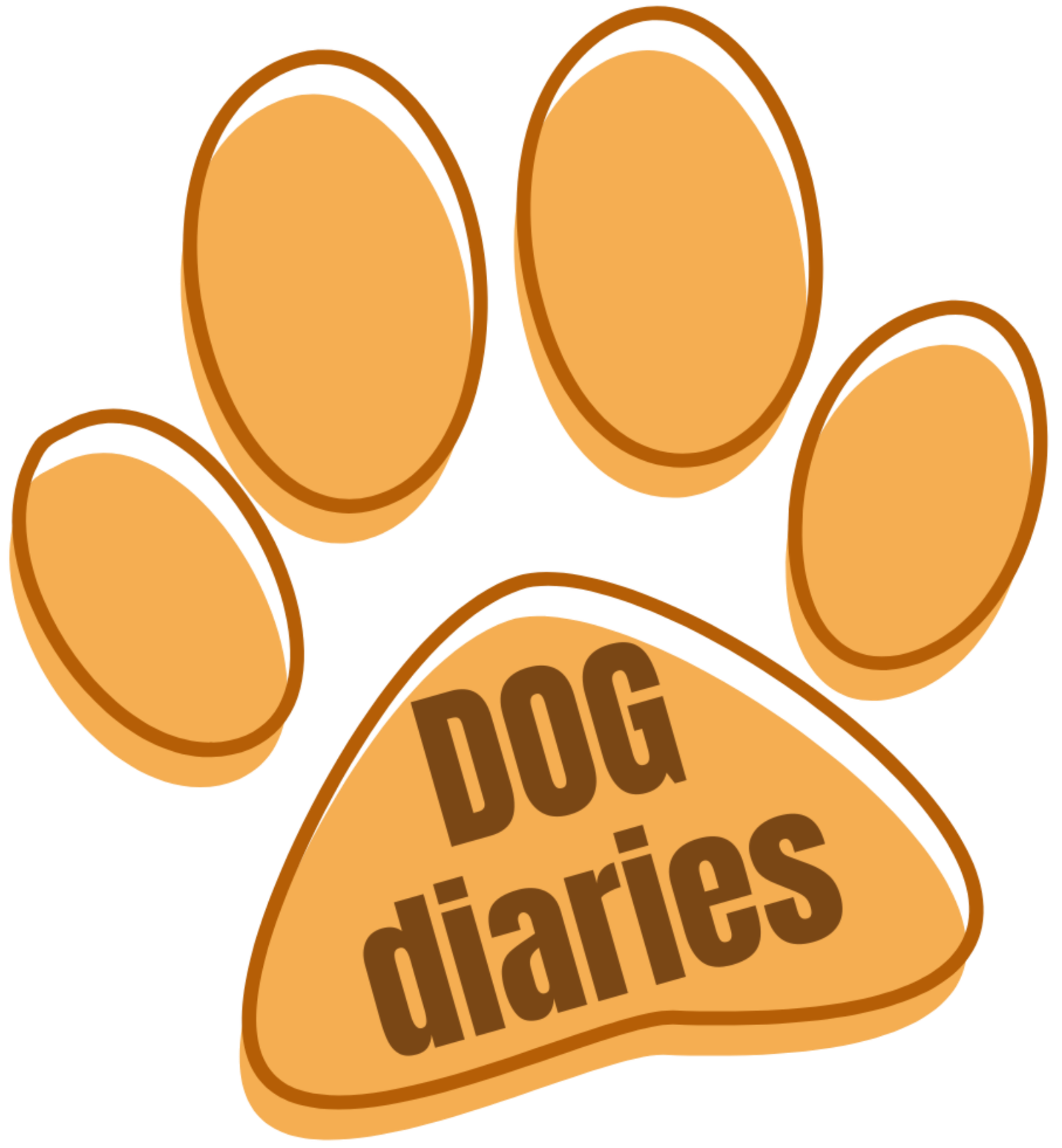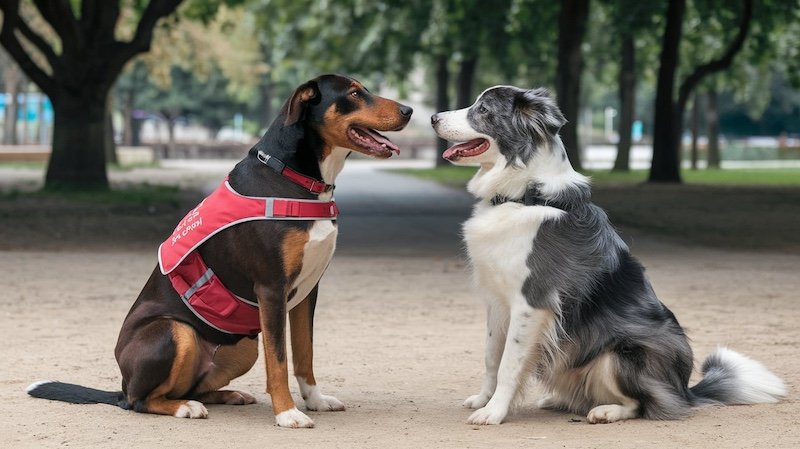Dogs are truly remarkable creatures. Not only can they sniff out drugs and bombs with uncanny accuracy, but they also possess an incredible ability to communicate with us humans. We’ve all seen those adorable head tilts and wagging tails, but did you know there’s a whole secret language of dogs just waiting to be decoded?

Understanding our canine companions’ subtle cues and body language can significantly strengthen the bond between humans and their furry friends. From the tiniest ear twitch to the most dramatic play bow, dogs are constantly “talking” to us. It’s like they’re furry little semaphore experts, flagging down our attention with every wiggle and woof.
Ever noticed how your pup gives you that guilty look when you catch them lounging on the forbidden couch? Or how they seem to smile when you grab their favorite toy? These quirky expressions are just the tip of the iceberg when it comes to canine communication. We’re about to embark on a tail-wagging journey through the fascinating world of doggy dialects, from whimpers to barks and everything in between. Get ready to become fluent in Fido!
Decoding the Canine Mind
Dogs communicate in fascinating ways, using a complex system of vocalizations, body language, and not surprisingly: scents. Let’s dive into the secret world of canine communication and unravel the mysteries of their minds.
Barking Up the Right Tree
Ever wonder why your furry friend won’t stop yapping? We’ve all been there! Barking is more than just noise pollution for your neighbors. It’s a rich vocal language that can express everything from joy to anxiety.
Short, sharp barks? Your pup might be saying “Hey, pay attention to me!” Low growls mixed with barks? Uh-oh, someone’s feeling threatened. And those long, mournful howls? Your dog might be channeling its inner wolf, calling out to its pack (that’s you, by the way).
But here’s the kicker – different breeds have their own unique “accents.” A Chihuahua’s yap is a far cry from a Great Dane’s booming bark. It’s like they’re speaking different doggy dialects!
Wagger’s Body Language
Who needs words when you’ve got a whole body to express yourself? Our canine companions are masters of non-verbal communication. Their body language is like a secret code, and we’re here to help you crack it!
A relaxed, wiggly body? That’s pure doggy joy. Stiff posture with raised hackles? Whoa there, someone’s not happy. And let’s not forget the infamous “play bow” – front end down, rear end up. It’s the universal canine invitation to party!
Even a dog’s eyes can speak volumes. Soft, slightly squinty eyes mean “I love you,” while a hard stare could be a challenge. Who knew our pups had such expressive peepers?
Ears and Tails: The Flags of Emotion
If a dog’s body is its billboard, then its ears and tail are the flashing neon signs. These appendages are like mood rings for our four-legged friends.
Tail held high and wagging? You’ve got one happy pup on your hands. But beware the low, slow wag – that’s a sign of an unsure or potentially aggressive dog. And a tail tucked between the legs? Poor thing’s scared or submissive.
Ears are just as telling. Perked up and forward? Something’s caught their attention. Flattened against the head? Uh-oh, someone’s feeling anxious or afraid. It’s like they’re wearing their hearts on their… ears?
Remember, every dog is unique. Just like us, they have their own personalities and quirks. So keep watching, and you’ll soon be fluent in “dog-ese”!
Doggish 101: Speaking ‘Woof’

Ever wondered what your furry friend is trying to tell you? Let’s embark on a tail-wagging journey into the world of canine communication. We’ll sniff out the secrets of doggy dialects and learn to decode your dog’s secret language.
Paws for Thought: Understanding the Basics
Picture this: your pooch is giving you the ol’ puppy eyes. Is it love, or are they just angling for a treat? We’ve all been there! Dogs are masters of non-verbal cues, and their bodies speak volumes.
A wagging tail isn’t always happy-go-lucky. If it’s stiff and high, your furry friend might be feeling a bit on edge. Low and slow? That’s your cue to approach with caution.
Ears perked up like satellite dishes? Someone’s on high alert! But if those ears are flat against the head, your pup might be feeling more scaredy-cat than top dog.
And let’s not forget the classic head tilt. We like to think they’re pondering the meaning of life, but they’re probably just trying to figure out what on earth we’re saying!
The Emotional Pooch: More Than Just a Pretty Fur
Who says humans have a monopoly on feelings? Our four-legged friends are emotional powerhouses, expressing everything from joy to jealousy with a wag, whimper, or woof.
When Fido’s feeling frisky, you’ll know it. That play bow – butt in the air, tail wagging like a windshield wiper – is a universal canine invite to party!
Guilty dogs? That’s just a myth! That “ashamed” look is actually your pup’s way of saying, “Uh-oh, human’s not happy. Better look cute!”
Growls aren’t always grumpy. Sometimes it’s just your dog’s way of saying, “Hey, that’s my favorite chew toy!” It’s all about context, folks.
And those puppy-dog eyes? They’re not just for show. Dogs have actually evolved to melt our hearts with those looks. Talk about emotional manipulation!
The Paws and Cons of Canine Socialization

Dogs are social butterflies with unique ways of interacting. Their paws, tails, and vocalizations all play a part in their communication toolkit.
Social Petworking: Making Furry Friends
We’ve all seen it – the excited tail wag when two pups meet at the park. It’s like watching a doggy version of speed dating! Dogs use their rich social intelligence to size up potential playmates in seconds.
But it’s not all tail wags and play bows. Dogs also use subtle distance decreasing behaviors to invite interaction. A relaxed body, soft gaze, and gentle lean can all mean “Hey, I’m friendly!” It’s like their version of a smooth pickup line at the doggy bar.
Ruff Day? Managing Misunderstandings
Sometimes our furry friends have communication hiccups. We’ve all seen that awkward moment when one dog misreads another’s signals. It’s like watching a canine version of a sitcom!
Dogs can use their paws to communicate in various ways. A gentle paw on your leg might mean “Pay attention to me!” while a raised paw towards another dog could be a sign of uncertainty.
When things get tense, we might hear some growls or see some teeth. It’s not always aggression – sometimes it’s just a dog saying, “Whoa there, buddy, personal space!” Learning to read these cues can help us prevent doggy disagreements before they escalate.
And let’s not forget the classic “guilty look.” You know, when you come home to find the trash strewn across the floor and your pup giving you those big, apologetic eyes. It’s their way of saying, “I swear, it wasn’t me… it was the cat!”
The ABCs of Dog Training
Ever seen a dog roll its eyes? We have, and it’s hilarious! Victoria Stilwell’s training methods focus on understanding these quirky canine expressions. She teaches us to decode the secret language of our four-legged friends, from their ear twitches to their tail positions.
We’ve learned that a sideways glance isn’t your pup plotting world domination – it’s just their way of saying “pretty please with a bone on top!” Stilwell’s techniques help us respond to these subtle cues, making training a breeze.
Remember, consistency is key. We stick to positive reinforcement, rewarding good behavior with treats and praise. It’s like teaching a toddler, but with more fur and slobber!
Canine Coaching: Tricks for Treats
Who said you can’t teach an old dog new tricks? With Stilwell’s approach, we’re turning our pooches into the Einsteins of the canine world! Her training tips focus on making learning fun for our furry friends.
We start simple:
- Sit
- Stay
- Come
- High five (because who doesn’t love a doggy high five?)
As we progress, we move on to more complex tricks. Before we know it, our dogs are practically doing our taxes! Okay, maybe not, but they’re definitely impressing the neighbors.
Stilwell reminds us to keep training sessions short and sweet. Five minutes of focused fun beats an hour of boring repetition any day. And don’t forget the treats – we’re not above a little bribery when it comes to our best friends!
My Amazon Affiliate disclaimer: Links to Victoria Stilwell’s book on Amazon is my affiliate link. Should you purchase her book, I may earn a commission and Tucker (who runs this site 😏) thanks you for that!


